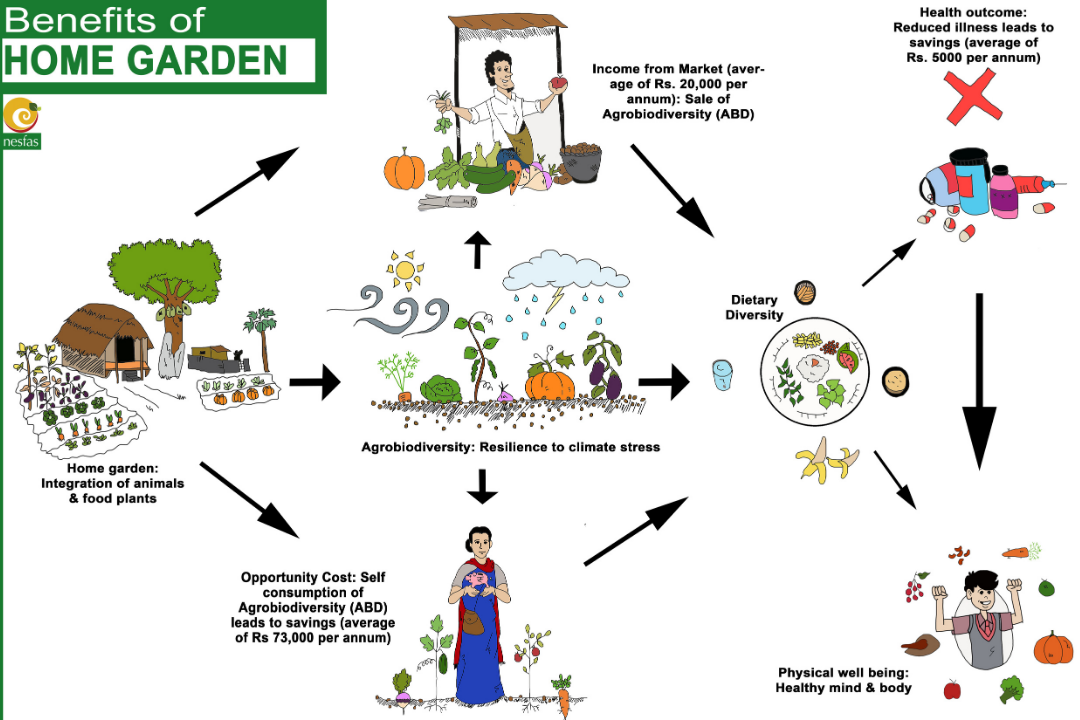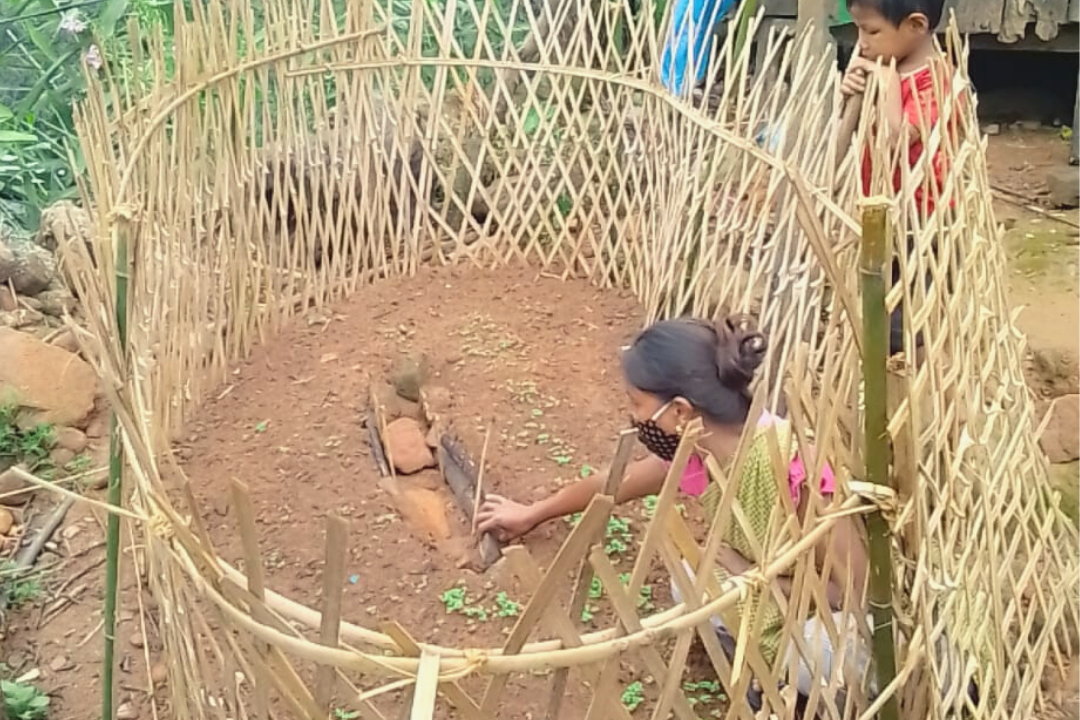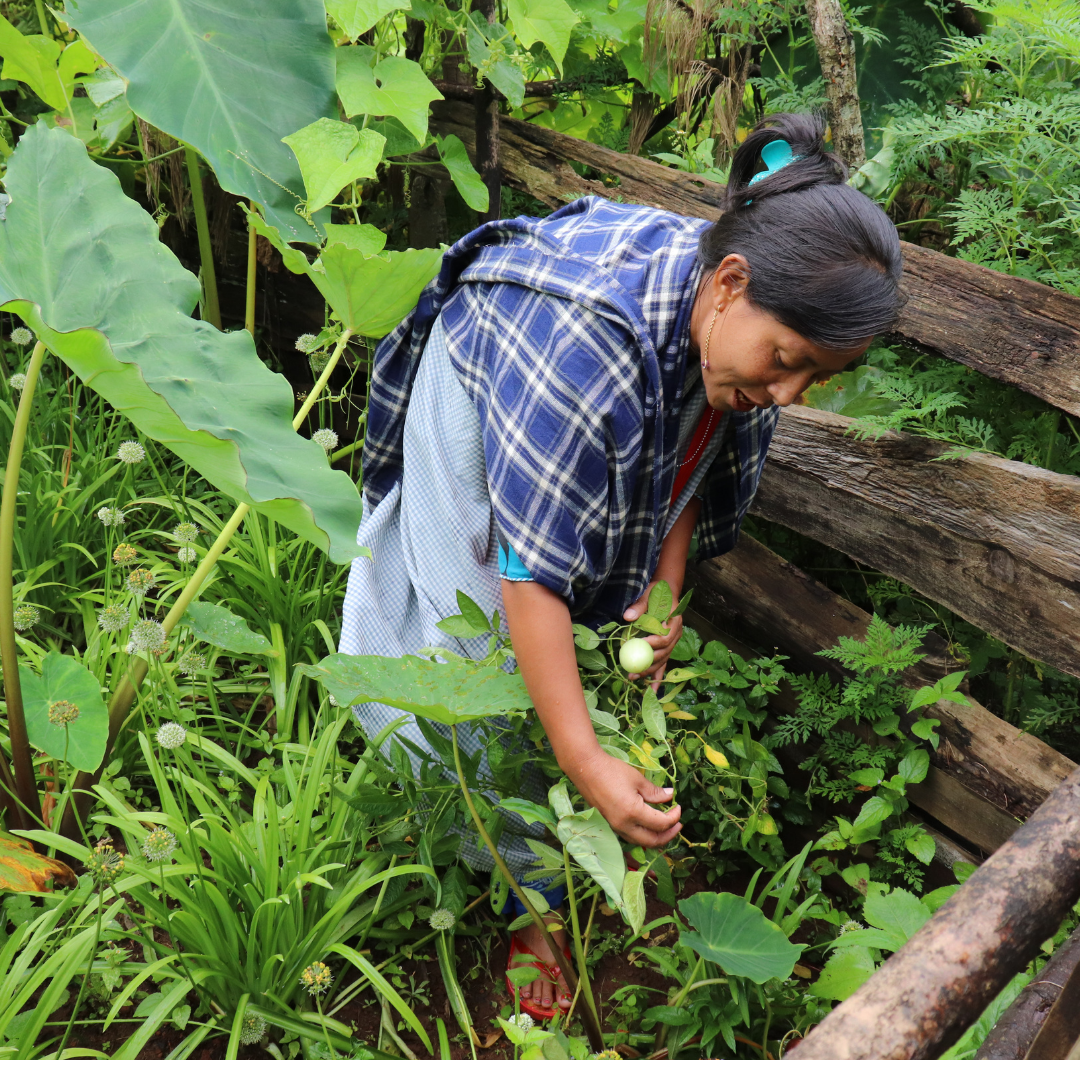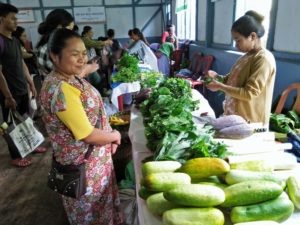Article co-authored by: Rini barman an independent writer and researcher
from Assam and Gratia E Dkhar lead associate, agroecology and training, with NESFAS, Shillong.
The focus on nutritional food and accessibility amid the Covid-19 pandemic has prompted people in the North-East to tend to their little patches of green

It’s early in the morning, but Plantina Mu-jai’s kitchen is already humming. A pot of rice bubbles as she examines the veget-ables that gure on the day’s menu at her Café Mei Ramew — Mother Earth in Khasi — on the outskirts of Shillong. The 60yearold resident of Khweng village, an hour’s drive from the Meghalaya capital, gets ready to chop the pumpkin, ash gourd and greens, all freshly harvested from her garden. But before she does that, she meticulously separates the seeds from the vegetables.
“We always save the seeds of the healthiest fruit from the rst harvest,” Mujai says.
Once dried, the seeds will be wrapped in cloth and kept above a replace. “The heat and smoke from the replace will protect the seeds from fungi and insects,” she explains. Redian Syiem (56), who has come to the café to sell surplus produce from her kitchen garden, adds that extreme care is taken to preserve the seeds. “Our elders taught us to collect and sow seeds on a new moon day,” she says. “This will prevent infestation of pests.”

Mujai and Syiem belong to the Bhoi community, a subtribe of the Khasi matrilineal so-
ciety of Meghalaya. They represent the state’s indigenous women who are recognised as custodians of land, valued food producers and reservoirs of customary plant knowledge.
On October 16, the Food and Agriculture Organization (FAO) celebrated World Food Day.This year, the UN body’s theme for the global event was “Grow, Nourish, Sustain. Together”. The slogan resonated deeply with the home gardeners of the NorthEast. Known as Kper in Khasi and Xakoni bari in Assamese, kitchen or home gardens have been a vital part of the people’s heritage. Because parts of the region, especially Assam, were (and still are) prone to oods and other natural disasters, maintaining kitchen gardens was not an activity of leisure but a judicious backup in the event of a natural calamity. Such wisdome rested in the preservation of seeds and local methods of acclimatisation of plant and vegetable species. Since the Covid19 lockdown,accessibility of food has
emerged as a major concern of the people, especially those liv-
ing in the remoter parts of the region. The focus on the nutritional value of food grown organically has led many to tend to their little patches of green.

Take Lina Borkakoti, a resident of Zoo road, Guwahati, who has converted her terrace into
a kitchen garden, where she grows medicinal plants and fruits. Borkakoti makes sure that
while cleaning her garden she doesn’t remove all the wild greens that pile up between her
mint plants. Some of the nutritional greens are rich in bre and antioxidants and help
build up immunity.
“There’s no space in our balcony so I have planted my garden on the roof. I am fond of the climbers, whose multidimensional utility (they bear leaves and fruit, as well as add to home décor) can enhance my kitchen,” she says. “Malabar spinach (puroi xaak), gourds, Asiatic pennywort (manimuni) and tengesi grow here. With some effort, I have managed to grow pepper; pepper seeds are quite expensive in the market,” she adds. The produce is largely for personal consumption.
Borkakoti’s daughter Madhabi (24) has also picked up gardening skills in the lockdown. She keeps a list of all the seeds that her mother collects from old gourds, and preserves them so that they can be planted later. “I get very nervous and lose sleep if the seeds don’t sprout at the right time,” she says.
She recalls how her grandmother used to tend to the plants, especially the ones that appeared to be wilting. “When she was alive, the weather wasn’t this harsh and we seldom had to worry about our plants. Granny could somehow give a spoilt sapling a new life. She
had magic ngers,” Madhabi says.
In urban Guwahati and Shillong, home gardening comes with its own challenges.
Growing vegetables and fruits is not easy in crowded buildings packed in congested cities.
But some green warriors have been making a difference right on their doorsteps, terraces, backyards, courtyards and windows. Efforts are on to save seeds and promote organic
farming and manage it as economically as possible.
The indigenous food system of Meghalaya includes diverse production systems — shift-
ing elds, wetland, home gardens and forests.Older methods of seed conservation included
winnowing, sieving and drying with the help of a traditional tray. Today, machines and medicines are involved in refining and cleaning the seeds so that they are suitable for cultivation and human consumption.
It is widely believed that the entire north-eastern region practises organic farming, having turned away from chemical fertilisers and pesticides. That, however, is not true. Most
farmers have over the years adopted chemical fertilisers sold by multinational corporations.
According to a 2017 article in the journal Agricultural Economics Research Review, Assam used about 183 tonnes of chemical pesticides and Meghalaya 9 tonnes in 201112, the disparity in consumption largely because of differences in population figures and geographical terrains. In 200304, Assam’s consumption of fertilisers that combined nitrogen, phosphorus pentoxide and potash, was about 46.6kg/ha, according to an FAO report published in 2005.
Manure and organic produce
Increasingly, though, small farmers are looking at organically produced crops in gardens or terraces for their daily needs. Syiem points out that almost all households in her community maintain a home garden because it is the most reliable way of ensuring food and nutrition security.
During the initial weeks of the lockdown,her community had faced shortage of rice, she
points out. But what comforted them was the availability of homegrown starchy staples such as maize, taro, cassava and fresh vegetables including wild edibles and medicinal plants in their gardens. These are largely grown using organic compost, a mixture of
animal dung, wood ash and dried biomass.
Manure and vermincompost are becoming more and more expensive — a reason why cultivators are adopting alternative methods such as biowastes or even strained tea leaves
as fertilisers. Urban home gardeners, besides composting kitchen waste, depend on cow-dung and organic compost to improve soil fertility.
Simi Rabha (30), a home gardener from Boko, Assam, stresses that the knowledge of
manuring, mulching and composting comes naturally to indigenous communities such as the Rabhas due to the people’s close and traditional links with nature.
“We still practise rituals in our harvest festivals which show how we are tied to garden-
ing and farming both physically and emotionally,” she says.
Along with using traditional measures, many are adopting modern
makeshift methods to deal with the problems that the times
pose. Take Prakash Kalita (47), who tends to tomatoes, baby brinjals, capsicums, cauliflower and green chillies in his farm, located about an hour from Guwahati, and has made unique roof covers for his plants using tattered clothes and plastic.
Kalita, who also sells saplings from his farm in the market, says that the recent oseason
downpour had him worried. “It’s dicult to shift certain crops as they refuse to grow roots if you move them. Therefore, I have prepared green covers so that they are protected from extreme heat and sudden rain. Water clogging is very dangerous to the newly sprouting ones; they get infected easily,” he says.
Green is good
Among the urban residents of Shillong and Guwahati, ornamental gardening has been a popular hobby but it has become more visible since the lockdown was announced in March. In recent times, many home gardeners have started incorporating vegetable patches in their gardens.
“Going to the garden is like seeing a therapist after a long day’s work,” says Marbahunlang Fancon (29). The Shillong based engineer adds she is happy that her family can access organically grown, micronutrient rich vegetables.
Dolly Devi (27), a teacher and entrepreneur from Jorabat, Assam, likes experimenting with organically grown produce and follows a strict one bowl diet. She says, “Chemically induced produce really aspects your body.
Light and healthy eating is the surest way to enhance immunity.” The rise of a
new fitness consciousness among the urban young has also enabled Dolly to sell her saplings through Instagram.
Gardens as rural-urban linkages
Apart from the pandemic, the interest in urban home gardens has been fuelled by
factors such as escalating food prices and growing awareness about the harmful effects
of pesticides and chemicals.
Not surprisingly, many are turning terraces and open spaces into minifarms or gardens and some are recycling fish boxes into container gardens, Fancon and Dolly say. Turning barren terraces and plots green means a step forward in community agriculture, the
gardeners point out.
Such efforts also strengthen ties between urban and rural residents and generate an appreciation of the local food system through the sharing of indigenous knowledge. Kitchen gardens do not just give people easy access to healthy food but also promote timetested agroecological practices.
A garden, after all, is more than just a patch of green. While it is true that these small efforts will not make any signicant change on the agrarian front, they are still a symbol of
hope. For a garden is where the past, present and future meet — in harmony.
This article was originally published in The Hindu Business Line



